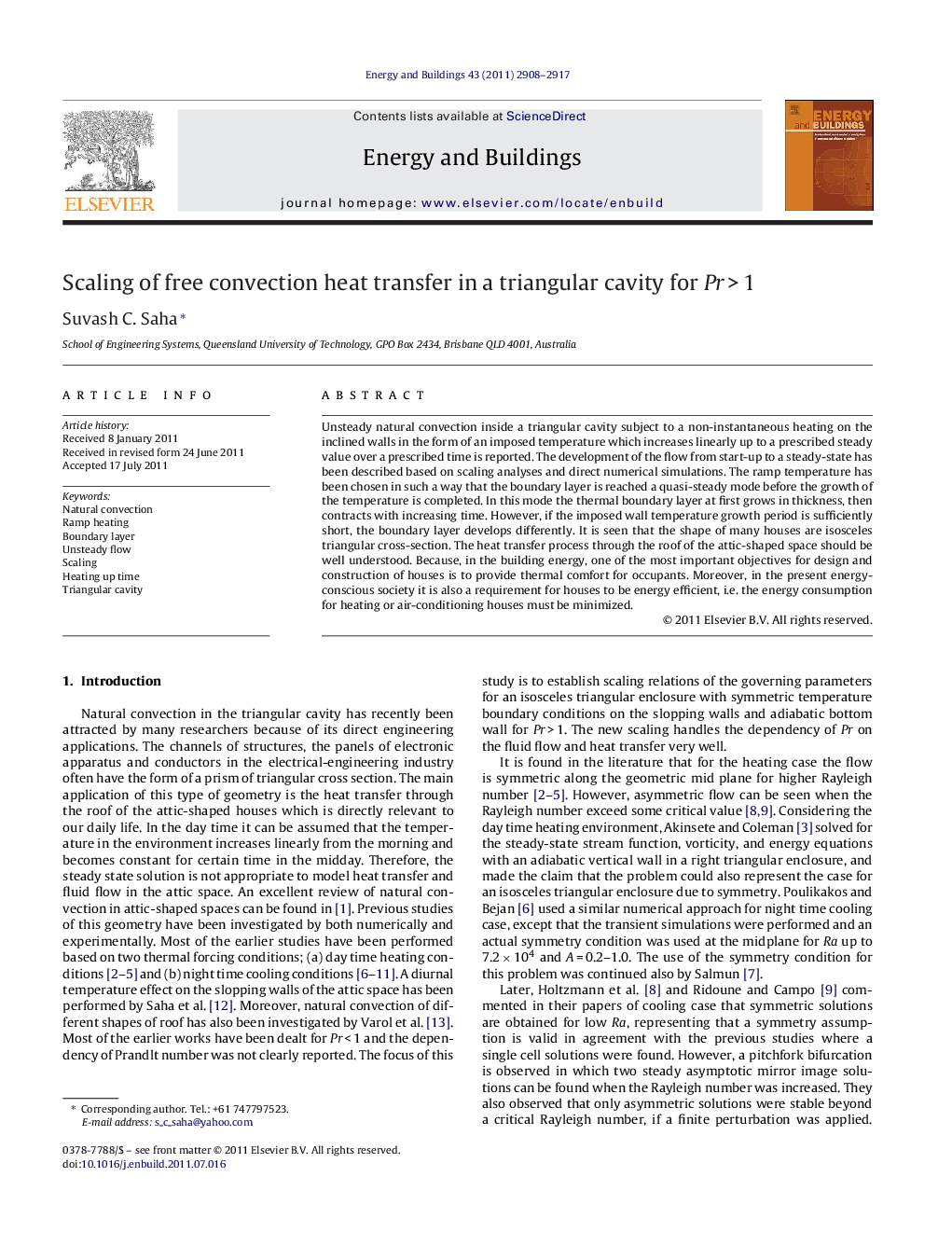| کد مقاله | کد نشریه | سال انتشار | مقاله انگلیسی | نسخه تمام متن |
|---|---|---|---|---|
| 264103 | 504092 | 2011 | 10 صفحه PDF | دانلود رایگان |

Unsteady natural convection inside a triangular cavity subject to a non-instantaneous heating on the inclined walls in the form of an imposed temperature which increases linearly up to a prescribed steady value over a prescribed time is reported. The development of the flow from start-up to a steady-state has been described based on scaling analyses and direct numerical simulations. The ramp temperature has been chosen in such a way that the boundary layer is reached a quasi-steady mode before the growth of the temperature is completed. In this mode the thermal boundary layer at first grows in thickness, then contracts with increasing time. However, if the imposed wall temperature growth period is sufficiently short, the boundary layer develops differently. It is seen that the shape of many houses are isosceles triangular cross-section. The heat transfer process through the roof of the attic-shaped space should be well understood. Because, in the building energy, one of the most important objectives for design and construction of houses is to provide thermal comfort for occupants. Moreover, in the present energy-conscious society it is also a requirement for houses to be energy efficient, i.e. the energy consumption for heating or air-conditioning houses must be minimized.
► Ramp temperature condition is used to see the transient effect of the boundary layer.
► Several scaling results have been developed based on the flow development.
► Heating up time scale has been derived when the whole cavity becomes heated up.
► All scaling relations have been verified by direct numerical simulation.
Journal: Energy and Buildings - Volume 43, Issue 10, October 2011, Pages 2908–2917